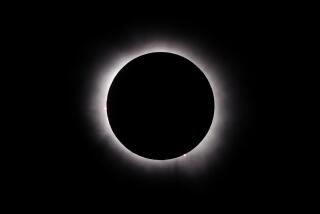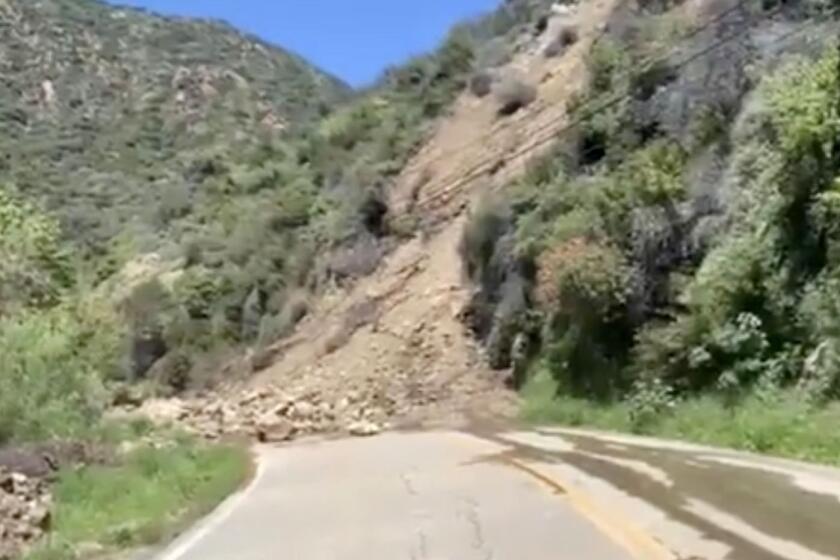Asteroid swings very near Earth: Are you up for a midnight viewing?
An asteroid five football fields wide will make a near-Earth flyby on Monday, and you may be able to see it at the witching hour with a pair of strong binoculars.
Late Monday -- particularly at midnight -- will be prime time for trying to catch a glimpse of asteroid 2004 BL86, said the Jet Propulsion Laboratory’s Paul Chodas. This celestial body won’t be so close again for at least 200 more years.
Scientists in Pasadena will be tracking the asteroid with radar. They expect to ascertain its exact size and make out boulders and other surface features.
“The images should be spectacular,” said Chodas, manager of the NASA Near Earth Objects program office at JPL.
He emphasized that the asteroid would not pose a danger to Earth -- at least not for a few hundred years.
“We know its trajectory well. ... It’s worth keeping an eye on in future centuries when it could come even closer.”
How difficult will it be to spot the asteroid? A bit, but it’s doable.
“An experienced amateur astronomer can find it for sure,” Chodas said, “because it’s moving in the sky.”
The asteroid will be traveling about 35,000 miles per hour and at its closest will be 745,000 miles from our planet, or about three times as far away as the moon.
California sky watchers who really want to spot the asteroid should rely on a star chart and travel to a nice, dark spot, away from city lights.
Chodas said JPL stargazers head for Mount Wilson or take Angeles Crest Highway into Angeles National Forest.
“I would recommend getting up over the first ridge,” Chodas said, “you have to block out the lights of L.A.”
L.A. Times Science staffers say awesome Southern California stargazing spots include Joshua Tree and Anza-Borrego parks.
The asteroid “will be not too far from Jupiter, which is very bright in the sky,” Chodas said, and will rise at sunset, reaching its highest point around midnight.
“It’s just a point of light,” Chodas said, “so it doesn’t look much different from other stars -- but the point is it doesn’t belong. This star that shouldn’t be there, that’s the asteroid.”
With a telescope, he added, observers might be able to detect the asteroid moving.
Watch an asteroid and follow me at @AmyTheHub
More to Read
Start your day right
Sign up for Essential California for news, features and recommendations from the L.A. Times and beyond in your inbox six days a week.
You may occasionally receive promotional content from the Los Angeles Times.







